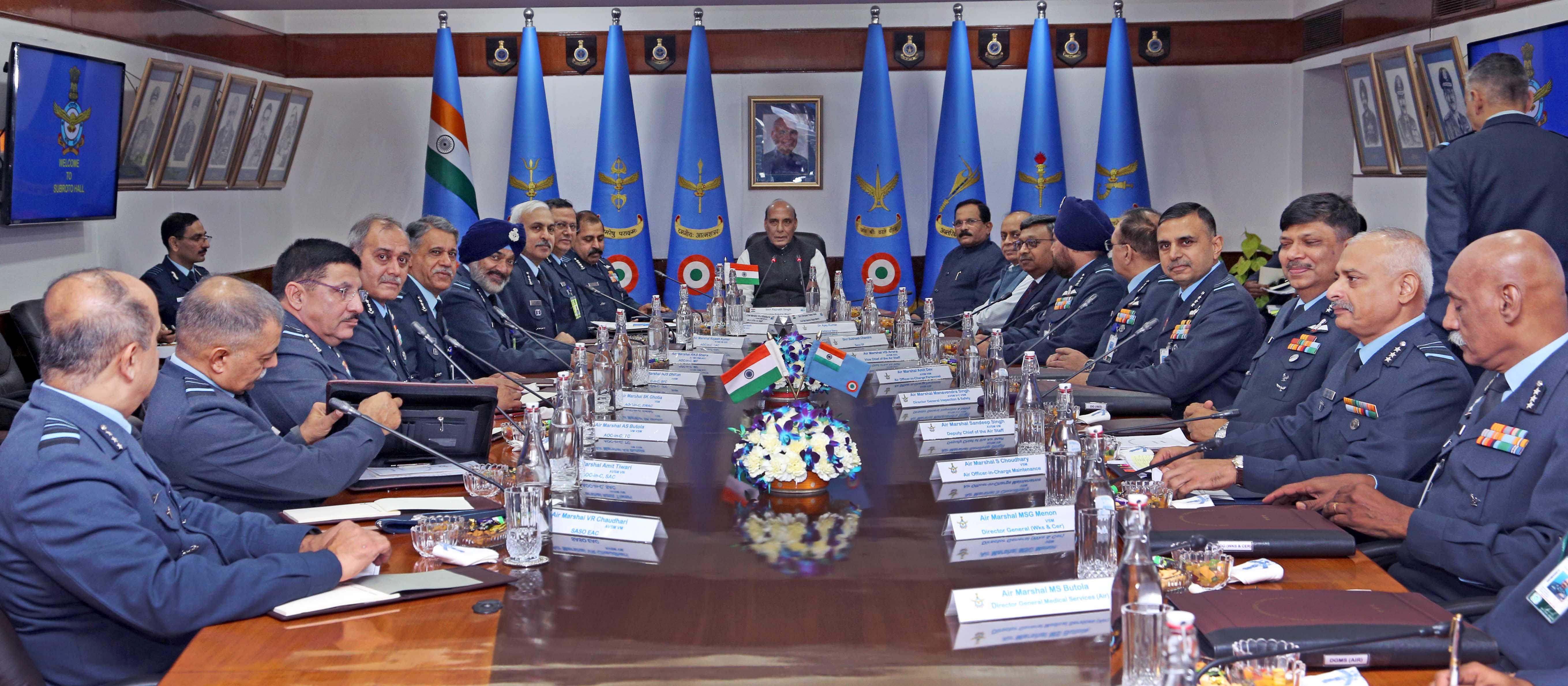New Delhi: The September 14, 2019, surgical drone attacks on two vital oil installations in Saudi Arabia’s Abqaiq and Khurais districts by suspected Houthi rebels in Yemen has rammed home the point for the Indian Air Force (IAF) too.
The Saudi refinery attack shook not only the global oil market but also upset many established beliefs held by security establishments the world over. The drones were apparently fired from at least 800 km away. Till then, no one thought the Iran-backed Houthis possessed such deadly high tech attack capability.
It is in this backdrop that the two-day-long IAF Commanders’ meet at Vayu Bhavan in the national capital is taking place. Besides Union defence minister Rajnath Singh, top military and defence ministry officials also attended the inaugural session of the meet.

Naturally then, the urgent need for high-capacity ‘unmanned aerial vehicles’ or drones, and ways and means to counter them were discussed in a top Indian Air Force (IAF) meet that began on Monday.
It will also bring into strong focus the importance of the classified ‘Project Cheetah’ as well as highlight the critical role of Israel—India’s top drone supplier—in general, and the state-owned Israeli Aircraft Industry (IAI) in particular.
India already operates the Israeli-made ‘Harop’ attack drones, which is a two-meter long projectile that can be packed with about 25 kg of explosives that can hover over a target before going in for the kill. Its small size allows a considerable stealth element and it flies back to its base if the target has not been identified or the mission aborted.
The ‘Searchers’ and the ‘Herons’ are also Israeli drones that are mainly used for surveillance and reconnaissance by the IAF but can be armed with explosive warheads too. ‘Project Cheetah’ envisages arming of all IAF drones and fast track acquisition of more such armed UAVs.
‘Project Cheetah’ can also be primed to suit requirements of the country's internal security scenario when such armed drones can be used against terrorists both for surveillance, intelligence gathering as well as for mounting precision attacks. This is being seen in official circles as a way of cutting back on collateral damage and reducing risk to security personnel and soldiers by withdrawing their exposure.
The IAF can take a note from the template of the US military’s experience where since 2004 more than 8,000 suspected militants have been killed in Afghanistan and Pakistan in targeted drone attacks which have also become controversial due to civilian deaths.
At the same time, the use of drones in internal security scenarios in India could also become controversial as the mandate to sue such lethal weapons against civilian targets inside the country could spark a furore.
The meet will also discuss the takeaways and achievements in achieving ‘jointness’ of operations along with the Army in the ‘Himgiri’ Exercise that was held along with the Army last month. It involved rapid ‘injection’ and transporting of Army soldiers in IAF aircraft across the difficult and high-altitude terrain of Arunachal Pradesh in a realistic recreation of a scenario in the possibility of a likely conflict with China.
Also read: Three Rafale jets handed over to IAF by France: Govt



